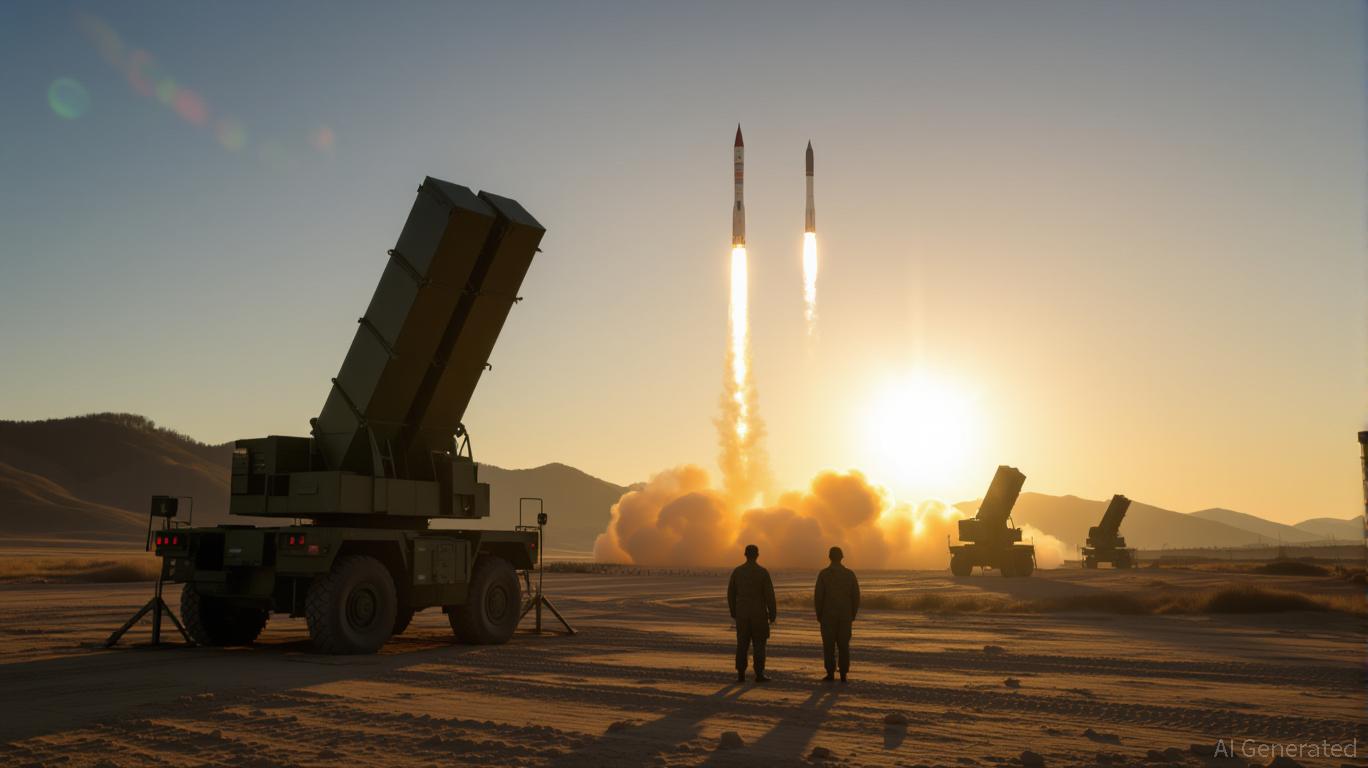In 2025, North Korea’s nuclear ambitions have become a seismic force reshaping global defense spending and security technology demand. With the regime advancing uranium enrichment, intercontinental ballistic missile (ICBM) capabilities, and strategic alliances with Russia, the geopolitical risk landscape has intensified. This escalation has triggered a surge in military budgets, cybersecurity investments, and energy infrastructure modernization across the Asia-Pacific and beyond. For investors, the interplay of military readiness, sanctions evasion, and technological innovation presents both opportunities and risks.
The Defense Spending Surge: A Geopolitical Catalyst
North Korea’s nuclear advancements have directly influenced defense budgets in key regions. South Korea’s 2024 defense spending hit $44.6 billion, with a projected 2% compound annual growth rate through 2030. Japan, meanwhile, has increased its defense budget by 50% since 2021, including constitutional reforms to allow collective self-defense. The U.S. FY 2025 defense budget of $849.8 billion includes $28.4 billion for missile defense systems, $49.2 billion for nuclear triad modernization, and $14.5 billion for cyber capabilities—direct responses to North Korea’s ICBM and cyber threats.

Defense contractors like Lockheed Martin (LMT) and Raytheon Technologies (RTX) are prime beneficiaries. Their missile defense systems, such as the Aegis and Patriot platforms, are critical for countering North Korean threats. Investors should monitor and to gauge their competitive positioning.
Cybersecurity: The Invisible Frontline
North Korea’s cyber operations, led by the Lazarus Group, have stolen an estimated $3 billion in virtual assets since 2017. These funds directly support its nuclear program, creating a surge in demand for cybersecurity solutions. Firms like Microsoft (MSFT) and CrowdStrike (CRWD) are seeing increased traction in zero-trust architectures and AI-driven threat detection. North Korea’s use of AI-generated identity theft and falsified trade documents has also spurred innovation in compliance tech, with IBM (IBM) and C3.ai (AI) developing real-time detection tools.
Energy and Supply Chain Resilience: A New Frontier
North Korea’s reliance on Russian oil and Chinese coal has exposed vulnerabilities in regional energy supply chains. South Korea and Japan are accelerating investments in liquefied natural gas (LNG) infrastructure and renewable energy projects. Energy firms like Chevron (CVX) and TotalEnergies (TTE) are well-positioned to benefit. Additionally, North Korea’s illicit trade in rare earth minerals has driven demand for supply chain visibility solutions. Palantir Technologies (PTAR) and SAP (SAP) are leading in end-to-end traceability systems to combat trade-based money laundering.
Global Military Spending: A Cold War-Style Surge
According to SIPRI, global military spending reached $2,718 billion in 2024, a 9.4% real increase from 2023—the steepest rise since the Cold War. The U.S. remains the largest spender at $997 billion, while Europe’s military budgets surged by 17% to $693 billion. This trend underscores a global shift toward high-tech deterrence, with Boeing (BA) and Northrop Grumman (NOC) likely to see sustained demand for advanced platforms.
Investment Implications: Balancing Opportunity and Risk
For investors, the defense sector offers a mix of defensive and growth opportunities. However, risks include political uncertainties (e.g., U.S. policy shifts) and market saturation in certain subsectors. A diversified approach—targeting both established defense contractors and emerging cybersecurity firms—can mitigate these risks.
Defense Contractors: Prioritize companies with strong R&D pipelines and contracts tied to missile defense and nuclear modernization. Cybersecurity: Focus on firms with AI-driven solutions and partnerships with governments. Energy and Supply Chain Tech: Invest in companies addressing energy security and supply chain resilience, particularly in LNG and rare earths. Conclusion: A Strategic Reallocation of Capital
North Korea’s nuclear escalation is not just a geopolitical flashpoint—it’s a catalyst for long-term capital reallocation in defense and security technology. As regional alliances deepen and technological innovation accelerates, investors who align with these trends can capitalize on a sector poised for sustained growth. However, vigilance is key: the path forward requires balancing strategic foresight with disciplined risk management.
In this volatile landscape, the defense sector stands as both a shield and a sword—offering protection against uncertainty while delivering outsized returns for those who navigate it wisely.
